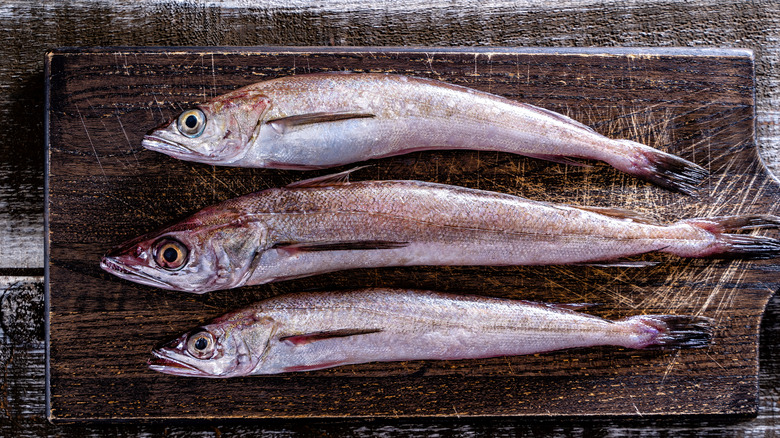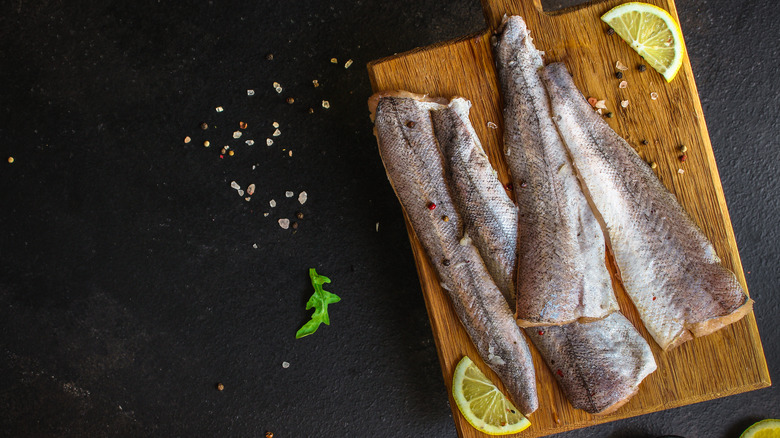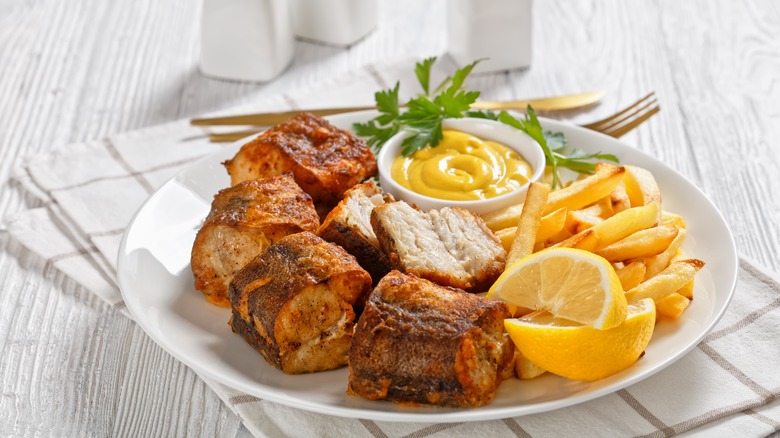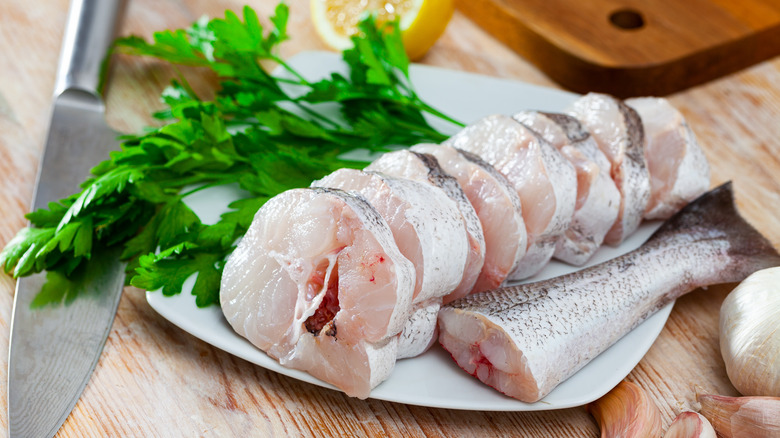Hake: The Delicate White Fish To Try If You're Bored With Cod
Hake is a groundfish that resides in both the Atlantic and Pacific oceans and is popular in coastal cuisine all over the world. From Argentina to Spain to Namibia, hake is recognized as an important staple. Depending on where you live, you may be more familiar with a similar but sturdier fish called cod. If you like cod but want to try something new, hake might be for you.
In parts of the world with a healthy hake fishery, this fish is readily available and easy to prepare. It comes with multiple health benefits and takes well to different flavors and methods of preparation — you might find it or bathed in an herby Mediterranean dressing, or lightly pan fried and served with chips. Whether hake is a fish you grew up eating or is something you have yet to try, this white fish brings with it plenty of options and recipes.
Cod vs. hake
While both white, flakey fish, there are some slight differences between hake and cod. Cod tends to be a sturdier fish, easy to batter and deep fry, making it a staple in English fish fry restaurants. Hake is more delicate. It is still good fried, but a light pan fry might be a better approach for this fish. Cod and hake are usually comparable in price. Flavor-wise, hake tends to be slightly sweeter than cod, and have a smaller flake.
One thing that hake and cod have in common is that they are not universally thriving. Where you live will determine whether cod or hake is currently the more sustainable choice. In some parts of the world, overfishing and other pressures have led to a threatened hake fishery — such is the case in Spain. Likewise, Atlantic cod has struggled in recent years in New England. Meanwhile, Pacific cod in Alaska is considered a sustainable choice, and Namibia has recovered from years of overfishing to create a very successful hake fishery. Both of these fish are delicious, and so the state of the fishery where you live should be a deciding factor in deciding what to purchase.
How to prepare hake
Many people who have long loved cod in their fish fry will also appreciate the delicate, flakey texture of hake. Hake is more delicate than a fish like cod, so it's important to remember to handle it gently in the kitchen. As long as you handle it with care, hake is a delicious substitute for many popular white fish dishes. Try this crispy and satisfying recipe for fish and chips and substitute out the cod for hake.
But hake is also popular in Mediterranean-style dishes. Spanish cuisine does a lot with this fish, called "merluza" in Spain. A classic dish from the Basque region features pan-fried-then-poached hake dressed with a salsa made of chopped parsley, fish stock, and garlic. For another Mediterranean-inspired dish, try this baked fish recipe with cherry tomatoes, olive oil, lemon, green olives, and more. For something fresh and summery, check out this recipe for pan-seared fish with asparagus and morels.
Hake nutritional information
Eating seafood has a lot of nutritional benefits, especially if the fish comes from a high-quality source. The United States Department of Agriculture's "Dietary Guidelines for Americans" recommends that adults eating 2000 calories per day should eat eight ounces of fish per week. Fish are a good source of vitamin B-12, vitamin D, protein, and iron.
Hake specifically is considered a low-fat fish, as it is very lean. This makes it a very healthy fish option to add to your diet. As with most seafood, certain contaminants may be present in the fat or tissue of the fish. Fortunately, you can maximize the benefits you receive from fish like hake while mitigating the risks by purchasing high-quality fish, abiding to the recommended servings for your demographic group, and adapting certain cooking techniques in the kitchen, such as draining the juices away.
Overall, hake is a highly nutritious food to add to your diet — and delicious, too.



